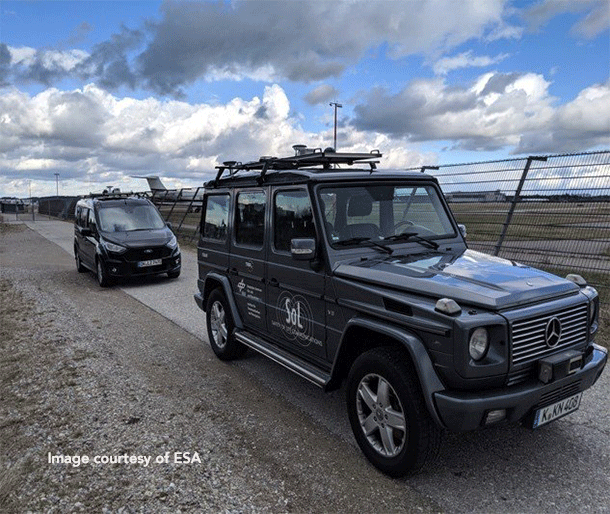First field tests of the project for enhanced GNSS positioning based on 5G networks

Like all state-of-the-art wireless network technologies, 5G networks will cut down practically to zero the delay between the devices and the servers they communicate with. The data transmission speed plus additional transmission capacity will make the service more trustworthy, allowing more devices to connect up to the network at the same time. Moreover, the lower power consumption of both networks and handhelds will reduce the environmental impact of mobile communications as well as their cost.
Furthermore, positioning with state-of-the-art 5G cell technology ushers in unknown hitherto possibilities for satellite-based positioning services in fields such as intelligent traffic management, asset monitoring, emergency and rescue services or personalized cell-phone-based delivery.
In 2016 the Horizon 2020 (H2020) operational group GNSS 5G took the initiative of giving form to the support of high-precision positioning services in 4G and 5G networks as a contribution to the Third Generation Partnership Project, 3GPP, the worldwide standardization effort.
In 2018, as part of this initiative, the European Space Agency (ESA) awarded to a GMV-led consortium the GINTO5G project (GNSS Integration into 5G wireless Networks).
Recently, under this umbrella project, a series of field tests was held by GMV and the German Aerospace Center (DLR) with the collaboration of engineers from NovAtel, u-blox and Deutsche Telekom.
The campaign was conducted in three different environments of the German city, representing country areas, a residential area of low housing and a built-up, high-rise area. Data of the transitions between these three environments was also recorded.
Data collection involved two vehicles fitted with GNSS and IMUs receivers of different degrees, correction services for some of these GNSS receivers and plus wireless broadband Long-Term Evolution (LTE) 4G and Ultra Wideband (UWB) receivers. Both vehicles running in the trial took relative positioning data between them, performing a continuous vehicle-to-vehicle monitoring to simulate future operational 5G standards.
During this campaign GMV took on responsibility for processing data, analyzing and characterizing the behavior of the GNSS and IMU equipment in each scenario while the Universidad Autónoma de Barcelona (UAB) carried out this same analysis for LTE and UWB data.
The next stage of this project involves complete processing of data compiled during this testing campaign, leading on to experiments in additional areas. Furthermore, the data compiled from all campaigns will be used for developing a simulator for obtaining hybrid GNSS and 5G solutions for carrying out preliminary studies in other areas of the planet that might be of interest in other projects.